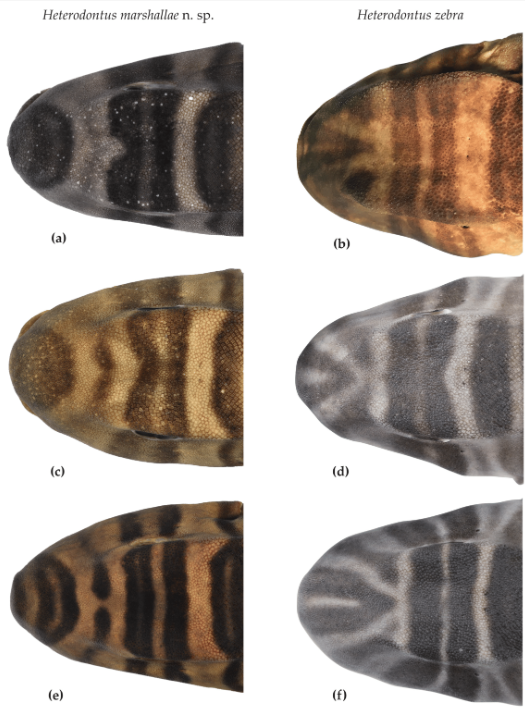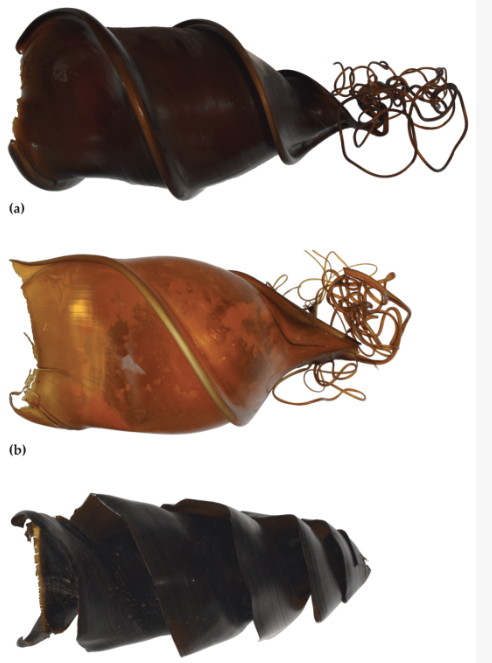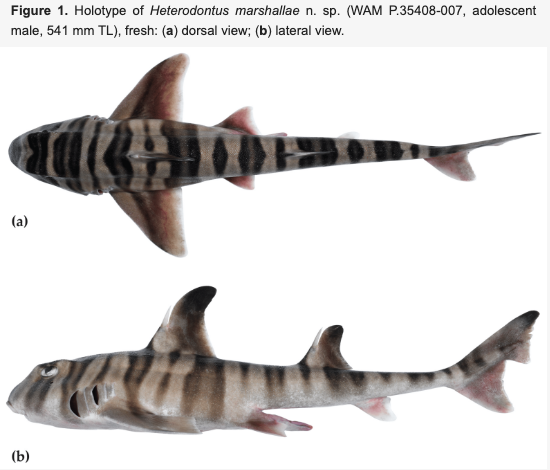A new species of Hornshark has been hiding in plain sight off the coast of northwestern Australia. Named the Painted hornshark, Heterodontus marshallae, was previously considered to be an Australian population of the Zebra bullhead shark, Heterodontus zebra, but it differs in the sequence of its NADH2 gene, several morphological characters, egg case morphology, and key coloration features.
Coloration is similar to that of H. zebra, but the new shark species has a semi-circular shaped bar on its snout versus a triangular one on H. zebra, plus H. zebra has a dark bar below the gill slits which is absent in the newly described Heterodontus marshallae.
Location and water depth also provide clues, as H. zebra is widely spread from Japan and Korea down to Australia, yet inhabits shallow waters from 0-143 meters. The new Painted hornshark only occurs in northwestern Australia, and occurs in deeper waters from 125-229m. Pretty much where the Zebra bullhead shark stops.

Port Jackson
There were nine recognized species in the genus Heterodontus, all belonging to the single-family Heterodontidae. Heterodontus includes the well-known Port Jackson shark, H. portusjacksoni, known for its blunt head, dorsal spine, corkscrew-shaped eggs, and crushing teeth which it uses to dine on mollusks, urchins, and other crustaceans. The new Painted horn shark actually shares more DNA with the Port Jackson than it does the Zebra bullhead shark.
The type specimen is an adolescent male, 541 mm TL, from west of Exmouth Peninsula, Ningaloo Marine Park, it was caught at 210–212 m depth, on 23 November 2022. There are also five paratypes and a single egg case. The specific name is in honor of Dr. Lindsay Marshall, a scientific illustrator and elasmobranch scientist who expertly painted all the sharks and rays of the world for the Chondrichthyan Tree of Life Project.
To read more on the full open-access paper, its authors, and editors, go to https://www.mdpi.com/1424-2818/15/7/849.




